Giant Water bugs are reddish-brown predator insects that live and prey in water. From the Hemiptera family, they are among the largest insects in the world.
If you’ve been interested to learn about this specific insect then you are in the right place. Inhere, find pictures of how both the adult and baby water bugs, types, diet, habits and more other facts.
Table of Contents
What do Water Bug Babies look like?
The babies will be laid in water as they are aquatic insects. From the first look, you will see a tiny, bright yellow color insect emerging from the egg. The color could be somewhat transparent depending on the color of the water but the eyes still remain black.
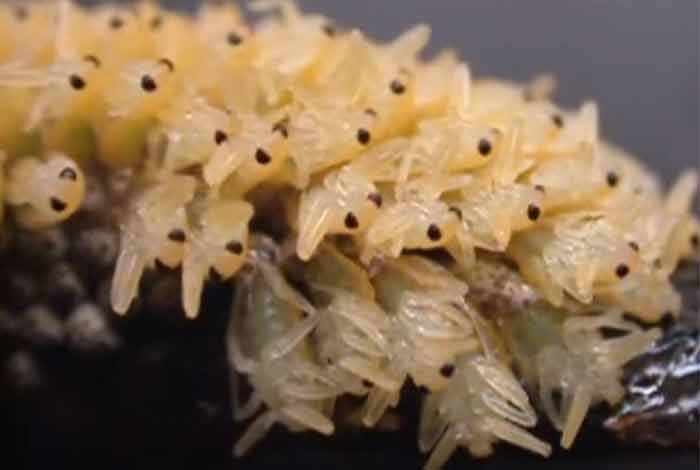

They are very small in size, measuring about half an inch in length. They appear oval and soft-bodied, but as time goes by, some changes will occur after sometime whereby the baby will then grow into reddish-brown nymph. The babies don’t have wings, those only come during the final stage of metamorphosis, adulthood.
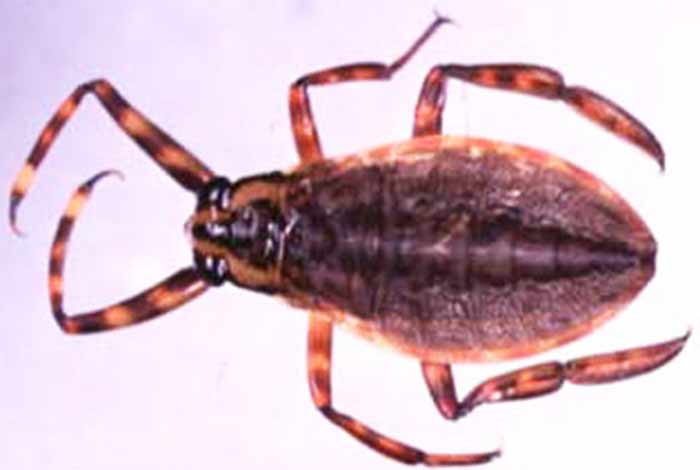
How Many Babies can a Water Bug have?
The number will depend on the number of eggs laid and whether the surrounding environment is conducive or not. An adult female is thought to lay up to 150 eggs. So, it safe to say that babies can be close to this number if the conditions are perfect.
How to Identify an Adult Water Bug
An adult is symbolized with various bodily changes such as; wings. The adult bug is now in a position to mate and restart the life cycle hence it need for the wings to fly. Secondly, the bugs will grow substantially in length, it can stretch up to four inches long.
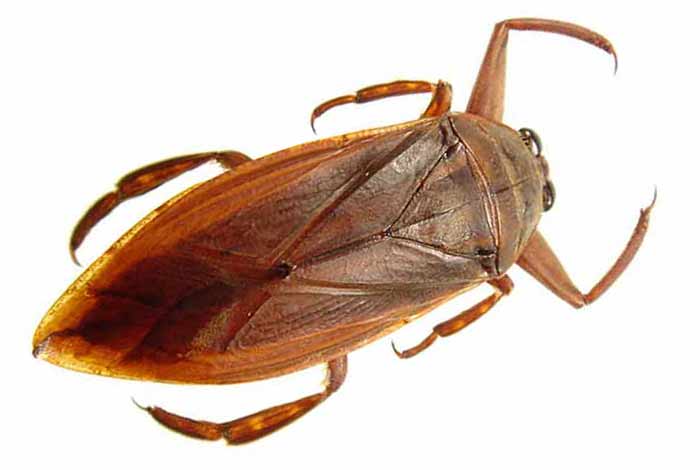
Besides the male bugs growing past long, they can also expand to over one inch wide, this is almost triple the size of the baby. The adult male will also have about nineteen body segments, whereas their female counterparts will have only thirteen or fourteen.
In some cases, the bugs will also have a different body hue compared to its nymph color. For example, from a tan brown to a reddish-brown. Everything else simply grows in size or length like the head, eyes, and antennae.
Life Cycle and Span
The life cycle of the water bug is actually simple. Unlike the usual stages of metamorphosis, they only have three distinct stages; the egg, nymph, then adult.
After mating, some water bug species lay eggs on the back of the male waterbug or while other species (Lethocerus medius) lay the eggs on the emerging vegetation in water bodies.
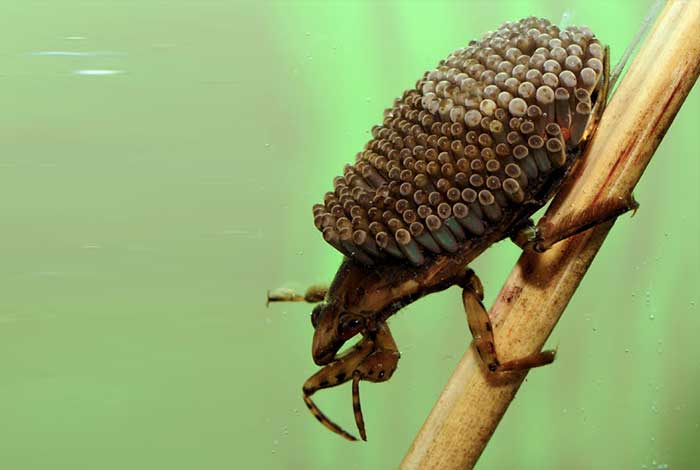
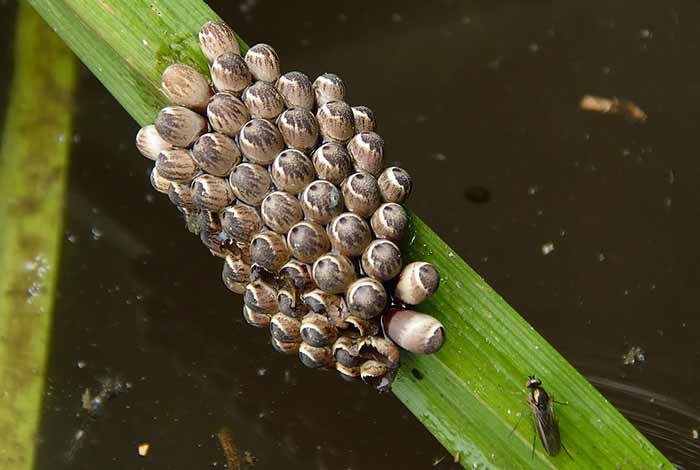
It is the responsibility of the male to ensure that the eggs are safe until they hatch. It takes one to two weeks for the eggs to hatch.
Following is a video showing the hatching process.
After the eggs have been laid, it takes one to two months to for the water bugs to develop into adults.
Life span…how long does an adult giant water bug live? A lucky one lives for about 12 months (1 year). Though this may depend on a couple of factors like presence of food,
Types of Water Bugs
Most of the info on this piece is on giant water bug. They also known by other names: toe-biter, Indian toe-biters, alligator ticks/fleas and electric-light bugs.
One outstanding characteristic that makes these insects different is that some lay eggs on the female back while others lays the eggs on emerging aquatic plants. The other difference is the regions they are found in around the world.
However, there are other types of water bugs that are not necessarily giant water bugs. They include;
Water Boatman
These ones belong to a different family by the name is ‘corixids.’ Unlike the other waterbugs, they are herbivores in nature and only feed on plants, moss, or algae. Without the mouthparts, they can’t bite, but instead nibble/ suck on juices found in plants. They also love to be around bright lights.
Water Strider
Number three on the list goes to the striders. From the family of ‘Gerridae’, they have the hairiest legs which allow them to comfortable walk on the surface of the water. They aren’t lengthy, measuring only half an inch long. They feed on other insects and larvae and they also prefer stagnant water compared to free-flowing.
Water Scorpion
Very similar to the known land scorpion. Comes from the ‘Nepidae’ family of water bugs. Originated from the European areas. They have a tan look with a length of one or two inches. The needle bag uses its front legs to swim and the back for crawling, it seems they are comfortable and adaptable to any environment.
5. Backswimmer
Finally, the last type of waterbugs is backswimmer. Belongs to the ‘Notonectidae’ family, they have the lightest body. Measuring only half an inch long, they are very good swimmers with the ability to swim backward and even float on water. They feed on insects and small aquatic animals.
Do Water Bugs Fly?
Yes, adult giant water bugs have wings that allow them to fly – especially during the mating season, they fly over various water bodies like ponds and lakes in search of their mating partners.
What do Water Bugs Eat?
With their predatory nature, water bugs use their front legs to hunt for their food, which includes; other small insects, small fish, tadpoles, and even frogs. Their piercing mouthparts allow them to nibble preys even twice their size.
Fun Facts about Water Bugs
Finally, we are in the most interesting section of the article. Here are fun facts you should know about water bugs.
- The giant water bug is the largest bug in the world amongst the category of true bugs.
- Their lifespan can stretch to over one year.
- There are numerous giant water bugs that are actually small in size.
- There are cases where the bugs fed in their eggs while there is a shortage of food.
- The mating process of the bugs can last for hours. This is because the process ends when the male species has carried the laid eggs to capacity. That is about 150 in number.
- They kill their prey by skinning then with the front legs and piercing venom.
- Their wings are known to form an ‘X’ shape by overlapping their wings.
- One of their survival tactics includes playing dead or slightly camouflaging to the plants. This protects them from predators. They also emit pungent smells from their anus in the effort of chasing the predators.
- These bugs are actually seen as a delicacy in various parts of the world.
- They have very painful bites, actually one of the most paint bites amongst other species of insects. Hence the term toe biters.
- To catch their prey, these insects lurk motionless in the water. Once they spot a meal, they will inject venom and wait to suck it out and eat the remains.
In a nutshell, it’s amazing how such a small insect (not precisely) can have so many features. They have incredible characteristics ranging from their defense mechanisms to outer appearance, and just how they live and relate to the world.
References
- https://en.m.wikipedia.org/wiki/Belostomatidae
- http://entnemdept.ufl.edu/creatures/misc/bugs/giant_water_bugs.htm
Further Reading